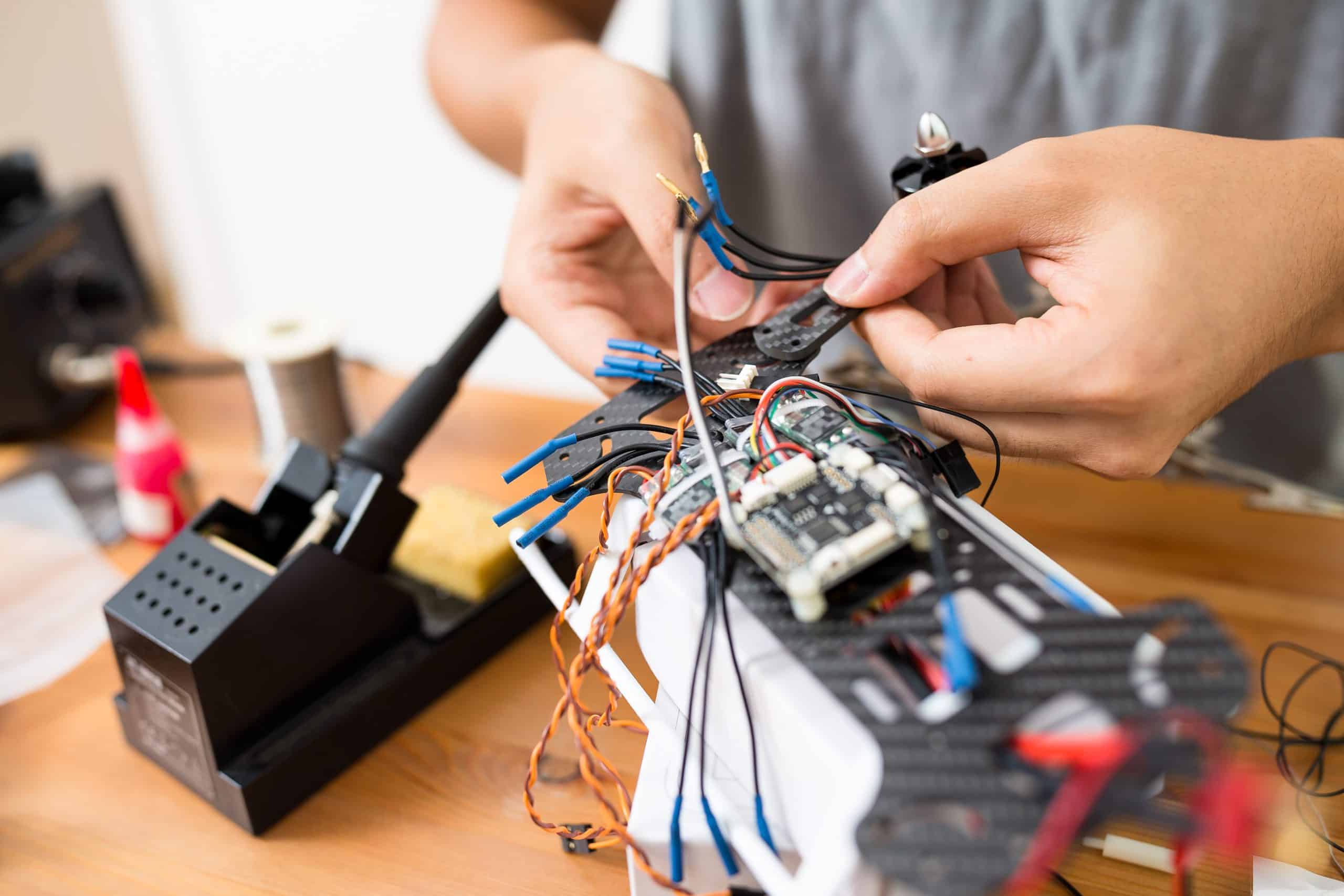What Are the Newest Developments in Drone Delivery Systems?

Drone technology is rapidly changing the face of the delivery industry. This futuristic method of moving goods from one place to another, which once seemed a distant dream, is quickly becoming a reality. Today, drone delivery services are not just about delivering your Amazon orders. The advancements in this niche have opened up possibilities in numerous sectors such as medical, logistics, and more. Amazon, UPS, and various other companies are now investing in this technology, hoping to revolutionize their delivery services. Let’s delve into the newest developments in drone delivery systems and explore their implications.
Drone Deliveries: The New Norm in Logistics
The logistics industry is embracing drone technology in a bid to make deliveries more efficient. The buzzword in logistics right now is ‘on-demand delivery,’ and drones are the perfect solution for that. The advantages of drone deliveries over traditional methods are numerous – they are faster, can operate round the clock, and are not affected by traffic conditions.
Avez-vous vu cela : How Can High-Tech Tools Enhance Personal Security Systems?
Amazon, a pioneer in the drone delivery market, has introduced the Amazon Prime Air service. This service aims to deliver packages to customers within 30 minutes of them placing an order. While the service is still in its early stages, it is expected to revolutionize the market.
Similarly, UPS has partnered with drone manufacturer Matternet to launch their medical delivery service. This service delivers medical samples to clinics and hospitals, saving valuable time that would otherwise be spent stuck in traffic. UPS also plans to expand this service to other sectors in the future.
Cela peut vous intéresser : How can bioinformatics help personalize cancer treatment plans?
The Influence of Drone Technology on the Market Share
Drone deliveries are expected to have a significant impact on the market share of traditional delivery services. E-commerce companies can avail the services of drones to deliver their products faster and more efficiently to their customers, which could greatly enhance customer experience and loyalty.
Moreover, the drone delivery market is not limited to just package deliveries. There are several other sectors such as medical, food, and logistics where drone deliveries can have a significant impact. For instance, in the medical industry, drones can be used to deliver medical supplies and samples quickly and efficiently, which can greatly improve the quality of healthcare services. This potential for diversity and growth in the market share makes drone technology an attractive investment for companies.
The Future of Air Deliveries: Medical and Emergency Uses
While most discussions about drone deliveries focus on packages, the medical industry is quietly emerging as a major player in this sector. From delivering medical supplies to remote areas to transporting organs for transplantation, drones have a wide range of potential uses in the medical industry.
In emergency situations, every second matters. Drones can deliver medical supplies much faster than traditional methods in these situations. For instance, in a study conducted by the University of Toronto, it was found that drones could deliver AEDs (automated external defibrillators) to emergency scenes up to seven minutes faster than ambulances.
Companies such as Zipline have already started using drones to deliver medical supplies in Africa, where road infrastructure is poor. The drones deliver blood, vaccines, and other critical supplies to hospitals and clinics in remote areas. This service has the potential to save countless lives and drastically improve healthcare in these regions.
Drone Delivery Services: Customer Perspective
As drone delivery systems become more prevalent, it’s essential to understand how customers perceive this new technology. A study by the University of Nevada, Reno found that while customers are excited about the prospect of drone deliveries, they also have concerns about safety, noise, and privacy.
However, as technology progresses and regulatory bodies set up strict guidelines for drone operations, these concerns are expected to be addressed. Companies like Amazon and UPS are also investing in noise reduction technologies and safety measures to make drone deliveries more customer-friendly.
Drone Delivery Systems: Technological Advancements
Drone technology is constantly evolving, and recent advancements are making drone deliveries more viable. For instance, companies are investing in AI and machine learning to improve the navigation and control systems of drones. These technologies allow drones to learn from their past flights and make necessary adjustments to avoid obstacles and reach their destination safely.
Another significant advancement is the development of drones that can carry heavier loads. This opens up the possibility of delivering larger packages or even multiple packages at once, making drone deliveries more efficient and cost-effective.
Despite the challenges, the potential benefits of drone delivery systems are too significant to ignore. As technology continues to advance and regulatory hurdles are overcome, drone deliveries could very well become the new norm in the near future.
Technological Challenges and Solutions in Drone Delivery
The rapid growth of drone delivery systems has not been without its challenges. Despite the many advantages, the technology faces several hurdles in its journey to become mainstream. These include technical issues like battery life, control systems, weather sensitivity, and the need for secure landing spots. However, the drone industry is continuously working on innovative solutions to these challenges.
One of the main challenges is the limited battery life of drones. Currently, most drones can only fly for about 30 minutes before needing a recharge. This limits the distance that drones can cover, making long-mile deliveries challenging. However, companies are investing in developing more efficient batteries and energy management systems to extend the flight time of delivery drones.
Weather sensitivity is another major challenge. Drones can be significantly affected by weather conditions such as wind, rain, and fog. To overcome this, drone manufacturers are exploring ways to make their drones more weather-resistant. This includes developing advanced algorithms that can predict weather patterns and adjust flight plans accordingly.
Navigating in densely populated urban areas can be difficult for drones. The presence of high-rise buildings, power lines, and other obstacles poses a risk. The solution lies in advanced navigation and control systems. Using AI and machine learning, drones can be designed to recognize and avoid obstacles, ensuring safe, efficient package delivery.
Ensuring secure landing spots for delivery drones is another technical challenge. Most drones need a clear, flat surface to land safely. To address this, companies are considering options like designated landing pads or even airborne drones that can catch and release packages mid-air.
Conclusion: The Sky’s the Limit for Drone Delivery
Looking ahead, it is clear that drone delivery systems are here to stay. What once seemed like a futuristic dream is fast becoming a reality. From Amazon’s Prime Air to drone-based medical supply deliveries in remote areas, the possibilities are endless.
The drone technology has significant potential to revolutionize delivery services across various sectors. Whether it’s delivering a book from a college station to a remote home or delivering life-saving medical supplies in emergencies, drone technology is poised to change the way we think about deliveries.
However, the journey is not without challenges. From regulatory hurdles to technical issues, there are still obstacles to overcome. But with ongoing advancements in technology and increasing investments in the drone market, these challenges are being addressed head on.
Ultimately, the vision of drones buzzing overhead, delivering packages swiftly and efficiently, is not far from reality. As the drone industry continues to innovate and evolve, the sky truly is the limit for drone delivery systems.
